Theme-based polling stations woo voters in Maharashtra
The Nagpur district administration hopes that the voters will get a new experience with this unique concept, which will also help increase the voter turnout.
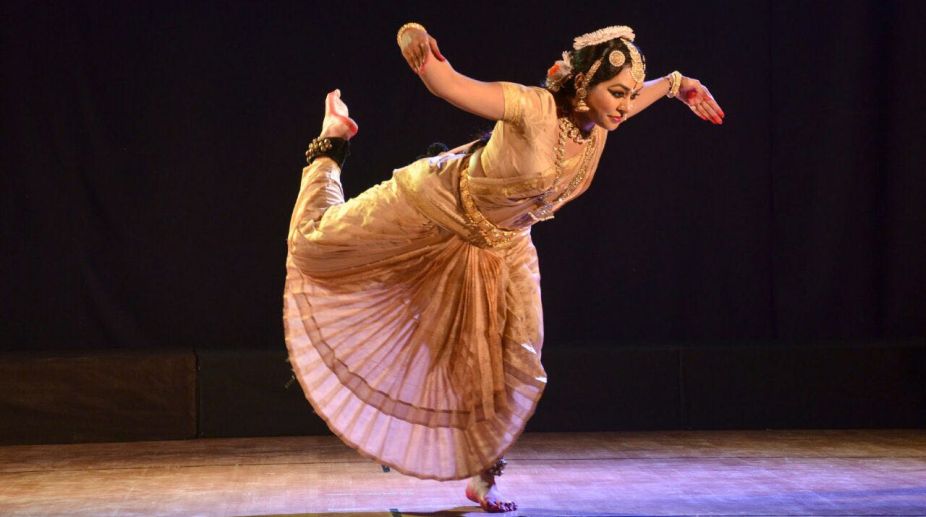
Shivaranjini
At Pune in Maharashtra, Bharatiya Vidya Bhavan and Infosys Foundation presented a cultural outreach programme at Sardar Mahadeo Balwant Natu Sabhagriha. This was possible due to Bharatanatyam exponent and SNA awardee, Sucheta Bhide Chapekar, the founder member of Kalavardini.
Her momentous work Nritya Ganga uses Marathi and Hindi songs to compose Bharatanatyam pieces. She along with her accomplished daughter and disciple, Arundhati Patwardhan was responsible for hosting the Divya
Trilogy.
The Divya Trilogy, conceptualised by Usha RK, was a one-of-its-kind imaginative foray into mythology. Stories of weapons such as the Brahmastra, Pinakastra, Sudarshanastra and Puspastra, each narrating several stories, captured one’s fancy.
Advertisement
The great Indian epics abound in legends of weapons used by the Gods like Brahma, Manmatha, Vishnu and Shiva. Those weapons had untold power and needed a Beej Mantra (coded message) to detonate them as they were down by gurus to their most illustrious disciples. Sometimes deities handed them out to the chosen ones themselves.

The Divya trilogy — Divya Astra, Divya Vahana and Divya Pushpa — germinated in Usha RK’s mind when she visited the Aurobindo Asram Library at Hardwar and chanced upon a slim volume written by The Mother on the spiritual significance of each flower. A film on Sri Aurobindo further opened a new vision to her. She put forward her help to the upcoming generation of Bharatanatyam dancers to bring out their creative talents.
The divinity of gods is often identified by their attributes, vehicles and weapons. Usha selected Divya Astra or weapons, Divya Vahana or vehicles and Divya Pushpa or flowers for dancers to create individual and unique presentations, researched and sourced from texts with sincerity.
Brahma Astra, supposedly the most powerful weapon, was presented by Pavitra Bhat; Sudarshana Astra with many of its legends was by Mithun Shyam; Pushpa Astra used by Manmatha, the god of love, was presented by Parimal Phadke, and Pinaka Astra associated with Shiva was by Parshwanath Upadhye.
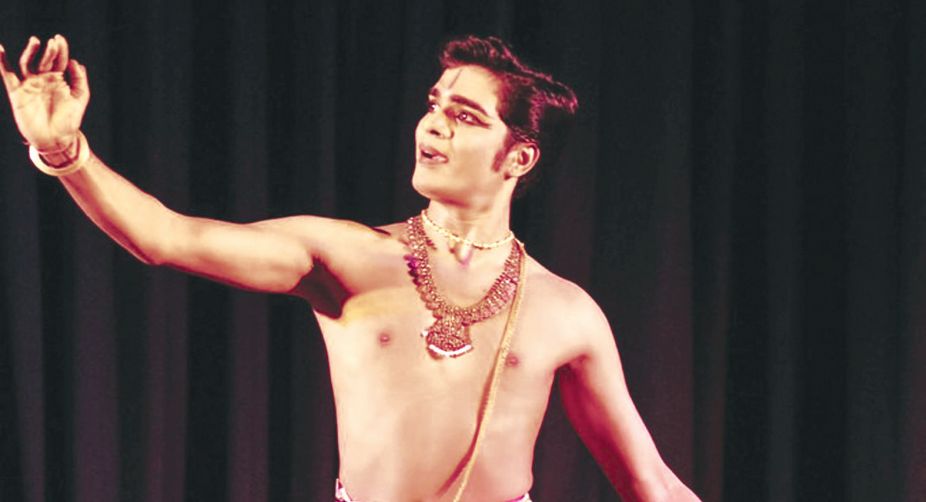
Brahmastra, the most infallible weapon of annihilation, was created by Brahma himself. Bhat geared it up with Trikala jathi along with Brahma Kavuthavam describing the origin and usage of the astra. Later it was followed by the tale of Rama who used it because of Sita’s abduction. Bhat wielded the idiom of Bharatanatyam like a master craftsman to present the unparalleled grandeur of the astra.
Pushpa Astra of Manmatha took a fresh look at the awakening of the senses. Born to goddess Lakshmi, an embodiment of Iccha shakthi or desire, Manmatha, her son is destined to create arrows out of flowers to awaken love and desire. Phadke as Manmatha created his bow with a sugarcane stem, using the Aravinda, Ashoka, Cuta, Navamalika and Nilotpala flowers, which cause fascination, disturbance, burning, desiccation and destruction.
Inspired by the lotus that blossoms with the kiss of the rising sun, he tries it on Rathi, who feels the same — Phadke was at his best in this. The cuckoo and the Ashoka flower remind him of her lips, intensifying love.
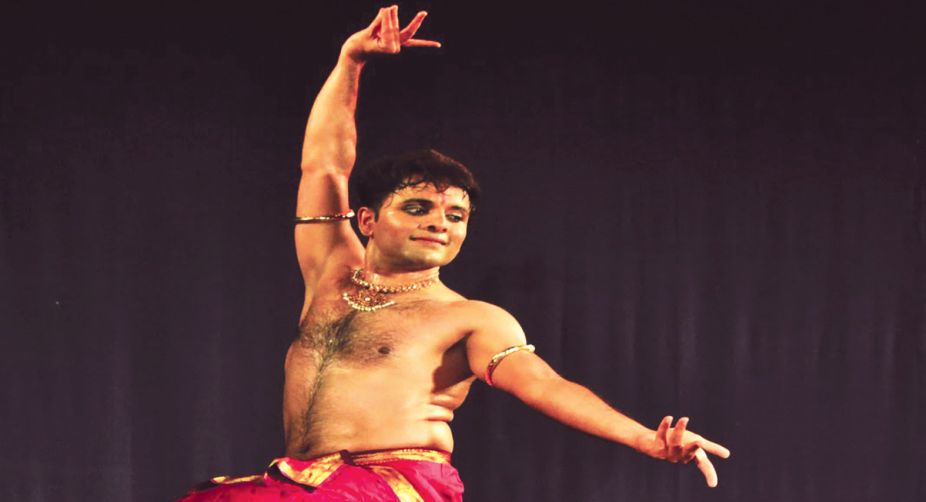
Love’s suffering, caused by separation, was depicted by the hanging creeper on the mango tree. The blossoming Nilotpala makes him faint. Manmatha was described as manoja — one who is born in the mind and whose friend is spring. The heart, mind and senses all get enticed by his invisible arrows. Manmatha’s work is as relevant today as it was before.
Besides other references, Phadke told the story of Manmatha and why Shiva had to resurrect him for the sake of creation. The story of Kama’s desire for Purnakala and his subsequent enslavement to her made his presentation interesting.
Parswanath Upadhye’s entry to show the feats of Pinakastra was dramatic. His enactment of Shiva destroying Tripurasura using Pinaka with grand leaps and great poses; its role in ushering in peace between Hari and Hara and the marriage of Sita and Rama; ultimately reaching King Janaka and becoming the cause for the annihilation of Ravana was gripping. The audience stayed glued to their seats.
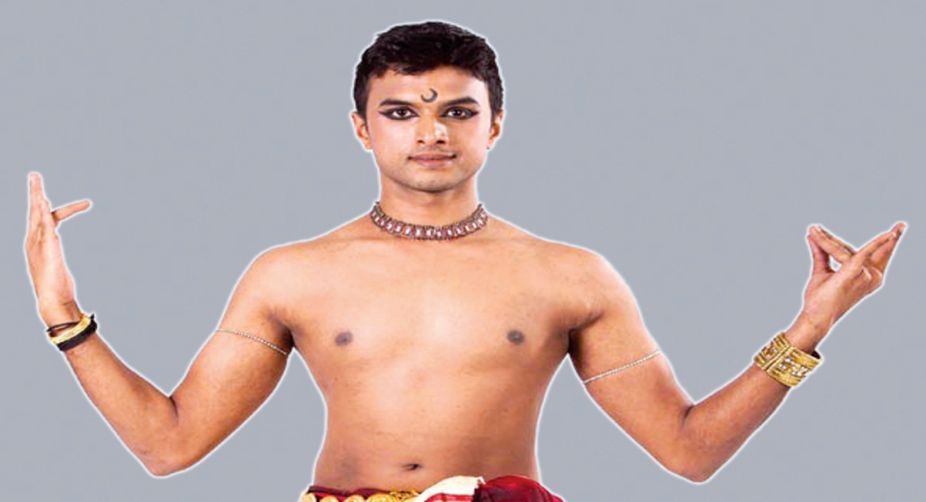
Sudarshanaastra depicted in the episode where Arjuna vows to kill Jayadhratha by sunset to take his revenge for the brutal killing of Abhimanyu was a treat to watch as was the chopping of Sisupala’s head with the Sudarshan chakra. Sudarshana as the saviour was depicted when Dakshayini’s body was cut to fifty one pieces to stop Shiva’s Tandava.
The second part of the Divya Trilogy dealt with the vehicles of the gods. Uma Satyanarayana was an epitome of grace, beauty, wisdom and knowledge and peace in the emulation of Saraswathi’s and Brahma’s vehicle, the Hamsa. Uma’s delineation through Bharatanatyam hand gestures was aesthetic. Hamsa’s graceful movements on the banks of the Saraswathi were heavenly.
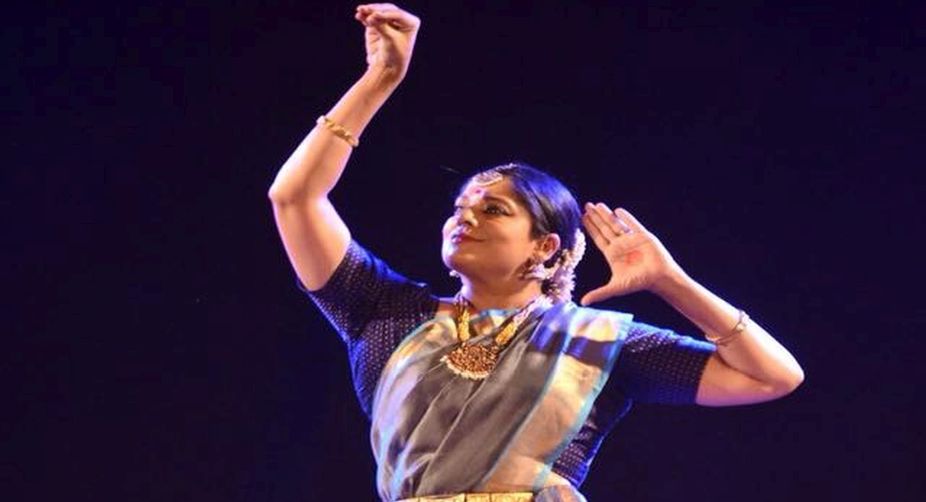
Patwardhan in the role of Gaja Vahana was regal. She used the gaja motif of Lakshmi, seated on a lotus in yogic posture, to her advantage. With her emotive powers she alternated between the roles of Lakshmi and Gaja with élan drawing a parallel with the goddess of agriculture. She adopted the narrative style and her softness was appealing.
Shivaranjini Harish described the mystical bird as golden bodied, white faced, with a spherical, sharp beak, large wings and a massive form — the vehicle of Lord Vishnu in Garuda Kavuthuvam. The movement of her facial muscles along with her large hand movements depicting Garuda’s wings looked authentic. The costume was excellent.
Garuda’s flight to the heavens for the pot of Amrutha, which promised eternal life, was blissful. His combat with Indra and an army of snakes combined drama along with nritta.
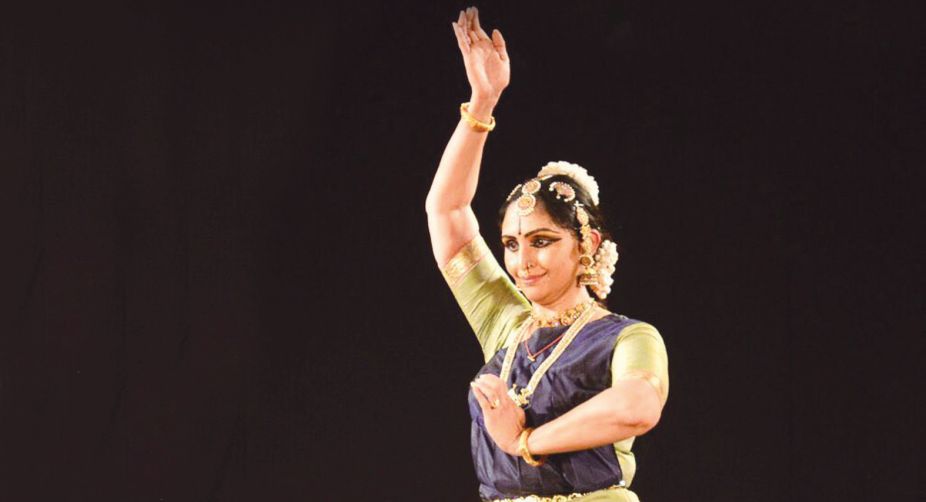
Nandi, the celestial vehicle of Lord Shiva is a Paramabhakta of him and goddess Parvati. Soundarya as Nandi-Shiva’s mount stole rasikas’ hearts with her wonderful stage presence and rendition of nritya and natya.
Nandi’s knowledge of Parambrahma, which drew many to him, was displayed through scintillating Mridangam bols explaining the Naada Roopa aspect of Parambrahma to the disciples. Accompanying artists, vocalist DS Srivathsa, music composer Nattuvanar Ramya Janakiraman, mridangist R Kesavan and flautist Rajat Prasanna added to the beauty of it all.
Advertisement